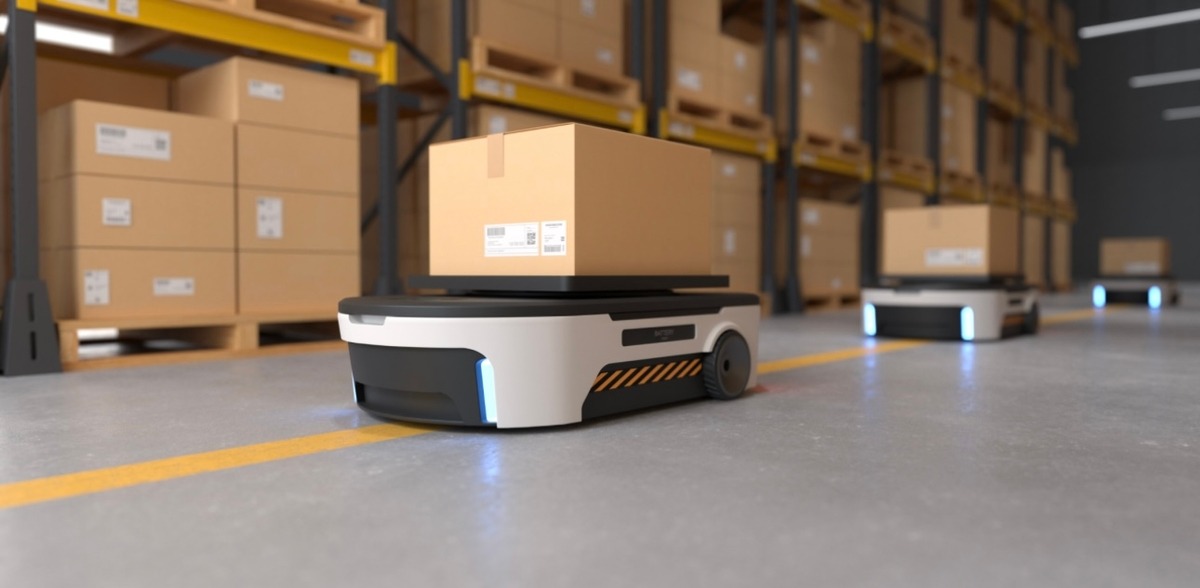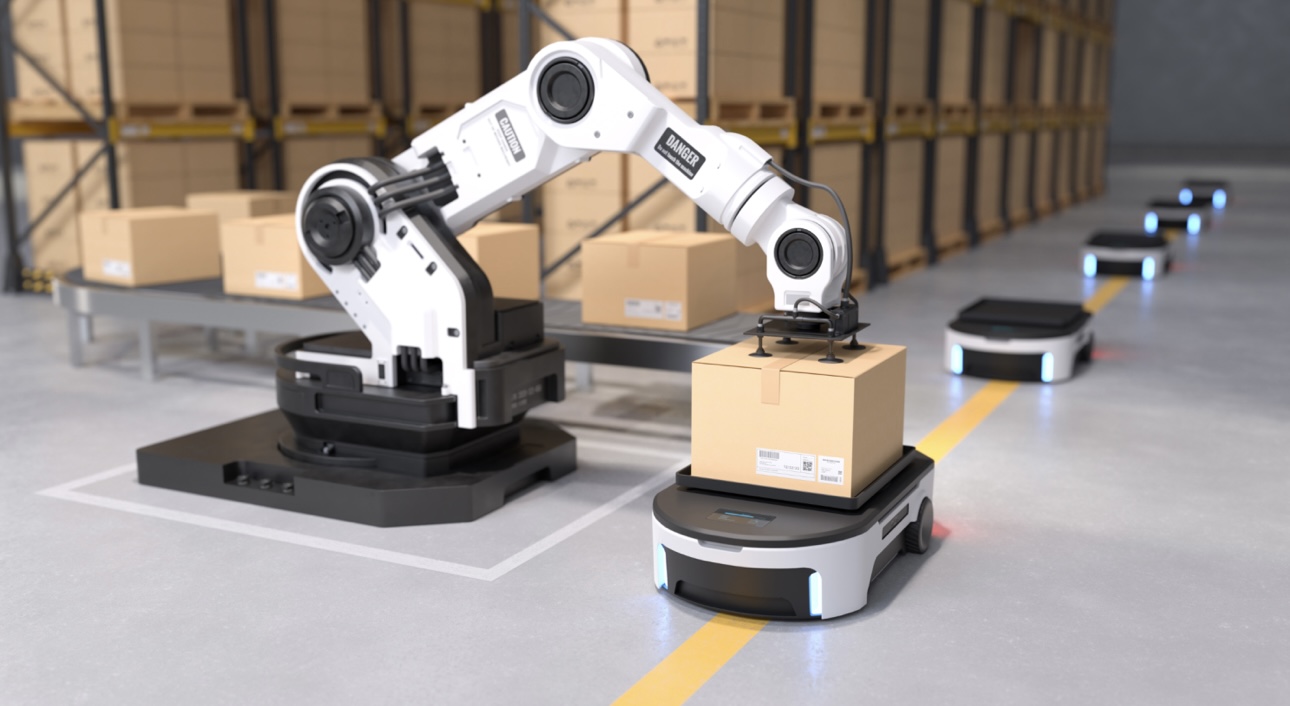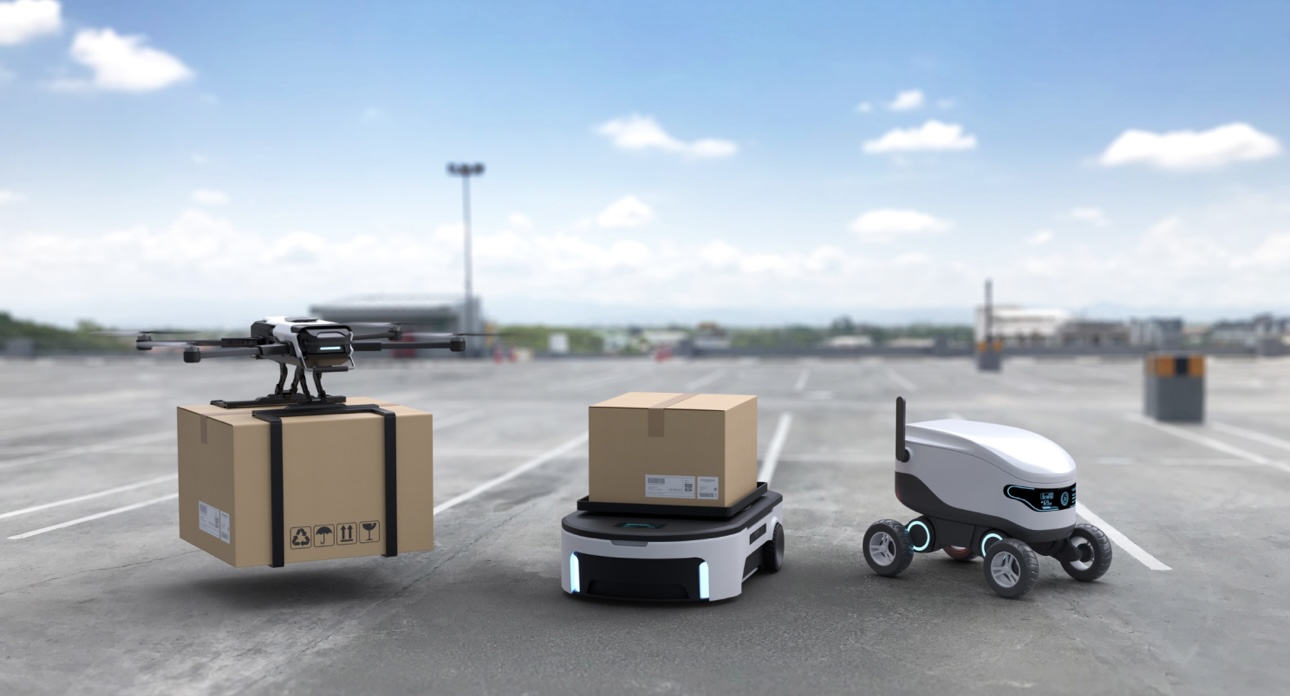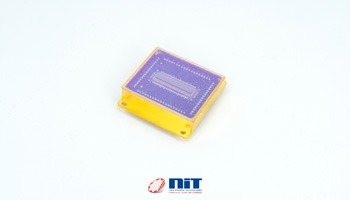Revolution on the Move: How Autonomous Mobile Robots (AMRs) Are Transforming Warehousing and Logistics

Revolution on the Move: How Autonomous Mobile Robots (AMRs) Are Transforming Warehousing and Logistics
Introduction
Today's swift warehousing and logistics sector holds a transformation process in which Autonomous Mobile Robots (AMRs) govern operational transformations. The intelligent systems can work through changing surroundings while operating without track networks or magnetic strip guidelines. AMRs demonstrate unparalleled superiority against established automation systems by providing users with flexible operation that becomes important as supply chain networks aim forrapid results, while reaching enhanced accuracy with lower operational costs. E-commerce market expansion along with heightened customer demands places unyielding strain on distribution facilities to speed up and improve delivery precision. The rising demands of e-commerce require AMRs to perform the internal warehouse duties and handle the entire sequence of picking, delivering and sorting operations. AMR deployment results in decreased human involvement and reduced mistakes and rises productivity levels. What Are AMRs?
 The Autonomy Power of Robots consists of self-guided robots containing sensors cameras alongside onboard processors. The equipment provides robots the capability to understand their operational environment while making instantaneous choices before executing independent maneuvering operations inside warehouse areas. Autonomous Mobile Robots excel over Automated Guided Vehicles since they operate with dynamic environmental mapping capabilities through LiDAR along with computer vision and AIsystems. The safe operation of these robots with human workers and automatic obstacle avoidance occurs without requiring human supervision. These adaptable vehicles prove beneficial in current warehouse operations because they can adjust to changing layouts and perform different tasks. Technology improvements in AMR systems have made them more dependable and expandable until they become vital elements of next-generation logistics needs. Benefits of AMRs in Warehousing and Logistics The growing significance of Autonomous Mobile Robots (AMRs) in present-day warehousing and logistics sector stems from their diverse ability to enhance operations. AMRs help organizations satisfy the growing supply chain requirements through their efficiency improvements as well as enhanced safety capabilities.
The Autonomy Power of Robots consists of self-guided robots containing sensors cameras alongside onboard processors. The equipment provides robots the capability to understand their operational environment while making instantaneous choices before executing independent maneuvering operations inside warehouse areas. Autonomous Mobile Robots excel over Automated Guided Vehicles since they operate with dynamic environmental mapping capabilities through LiDAR along with computer vision and AIsystems. The safe operation of these robots with human workers and automatic obstacle avoidance occurs without requiring human supervision. These adaptable vehicles prove beneficial in current warehouse operations because they can adjust to changing layouts and perform different tasks. Technology improvements in AMR systems have made them more dependable and expandable until they become vital elements of next-generation logistics needs. Benefits of AMRs in Warehousing and Logistics The growing significance of Autonomous Mobile Robots (AMRs) in present-day warehousing and logistics sector stems from their diverse ability to enhance operations. AMRs help organizations satisfy the growing supply chain requirements through their efficiency improvements as well as enhanced safety capabilities.
1. Enhanced Operational Efficiency
The operational workflows benefit substantially from AMRs because these machines undertake automated repetitive work including goods transportation and parcel sorting and order picking activities. The uninterrupted operation of AMRs surpasses human capabilities which brings about faster processing times for orders while generating higher operational speeds. The mobile robot implementation at Amazon facilities with more than 750,000 units serves as a visible example of how these constructs optimize operations. The implementation of AMRs within Amazon fulfillment centers effectively reduced order fulfillment expenses by 25% and should reach a $10 billion annual savings target until 2030.
2. Improved Accuracy and Reduced Errors
AMRs employ advanced sensors connected to AI-powered navigation systems and machine learning abilities which enable them to carry out tasks at a high precision level. The machines demonstrate excellent performance during picking along with sorting and item transportation followed by error-free operations. High accuracy from AMRs helps managers handle inventory better which leads to lower returns and happier clients. The AI-powered AMRs at JD.com accomplish picking tasks with a 99.9% accuracy level which reduces mistakes while minimizing operational expenses.
3. Enhanced Workplace Safety
The implementation of AMRs brings substantial increases in workplace safety for warehouse areas. The implementation of AMRs can ensure workplace safety by executing heavy workloads and resisting congestion zones which helps minimize occupational hazards. Since they possess built-in sensors with real-time obstacles, detection systems AMRs enable operations together with human personnel and prevent accidents that make the workspace safer for all users.
4. Cost Efficiency and Return on Investment (ROI)
In spite of the upward initial expenses required for AMR technology acquisition, the total long-term advantages outpace the spending. Through their implementation businesses achieve savings on labor costs and reduce mistakes while boosting productivity rates. The return on investment for AMRs arrives swiftly in environments that perform high-volume operations. The ability of AMRs to expand operations while avoiding major construction modifications makes them economical when business needs grow at any scale. AMRs establish a beneficial and accurate platform that addresses warehousing problems, logistics bottlenecks, and enables smarter supply chain control.
5. Scalability and Flexibility
The automation landscape in modern warehouses becomes flexible and scalable because of Autonomous Mobile Robots (AMRs). The expansion of operational demands from business expansion and rising order volumes and seasonal peaks enables simple addition of AMRs throughout existing infrastructure. The absence of programmed pathways allows autonomous mobile robots to rapidly become operational within different warehouse environments, because they operate independently from mapped paths. The flexibility of AMRs makes them excellent solutions for organizations with shifting operations or firms advancing into emerging markets. The distinctive feature of AMRs is their ability to install as standalone systems without expensive setup procedures because they function through plug-and-play practices suited for high-speed business operations.
6. Real-Time Data and Analytics
Real-time data collection represents a fundamental advantage of AMRs because the robots capture operational information that they transmit in real-time. The robots collect complete records of warehouse activities that include job completion durations along with inventory movements while also monitoring building traffic patterns. Warehouse managers gain essential information from the collected data to develop better workflow patterns along with proactive maintenance strategies and bottleneck identification. Operating visibility at this level enables organizations to use data for strategic decisions which drive better warehouse efficiency. Long-term planning will benefit from analyzing AMR-generated data which enhances resource allocation simultaneously with enhancing continuous process improvement throughout warehouse and logistics systems.
Certified System Integrator Program
Set Yourself at the Forefront of the Global Vision Market
.jpg) Vision system integrators certified by A3 are acknowledged globally throughout the industry as an elite group of accomplished, highly skilled and trusted professionals. You’ll be able to leverage your certification to enhance your competitiveness and expand your opportunities.
Vision system integrators certified by A3 are acknowledged globally throughout the industry as an elite group of accomplished, highly skilled and trusted professionals. You’ll be able to leverage your certification to enhance your competitiveness and expand your opportunities.
Real-World Implementations

Major companies are implementing Autonomous Mobile Robots (AMRs) because these systems prove successful in advancing warehouse and logistics operations. AMRs enable significant performance improvements and reduced costs as well as enhanced operational productivity for both international retail organizations and standard retail chains.
1) Amazon
Amazon functions as an excellent example of AMRs serving as transformational tools in warehouse operations. Robots developed by Amazon operate within its fulfillment centers numbering more than seven hundred and fifty thousand systems and incorporate three main models such as Robin, Sparrow, and Proteus. Amazon uses Robin and Sparrow robots to perform precise handling of items through all stages from picking to identification and sorting, yet Proteus represents the company's first fully independent cart-moving robot which operates autonomously around personnel who work in the
facilities. The robots enable faster delivery throughput and secure employee safety because they automate the execution of hard physical work. AMRs operating within the Amazon fulfillment process decreased costs by 25% while creating future savings measuring in billions.
2) John Lewis
British retail chain John Lewis worked with Hai Robotics to establish sixty automatic mobile robots that reached ten meters in height throughout its warehouse facilities. This strategic decision resulted in operational cost savings reaching £1 million and an expansion of storage space by 75% percent. The system updates during Christmas time facilitated rapid packaging and fast distribution of about 17 million products to result in better order precision coupled with accelerated delivery times.
3) DHL and Walmart
DHL employs AMRs to enhance warehouse sorting and transportation activities attaining better efficiency while decreasing expenses across operations. Walmart made AMRs part of its distribution center operations to optimize the tracking of inventory and restocking procedures and order distribution processes. The implemented systems create improved supply chain performance while enabling faster and more precise customer delivery operations.
Challenges and Considerations
 The installation of Autonomous Mobile Robots (AMRs) generates various advantages but the execution process contains multiple obstacles. Companies need to examine different factors intensely to achieve safe and productive storage and logistics operations at their locations.
The installation of Autonomous Mobile Robots (AMRs) generates various advantages but the execution process contains multiple obstacles. Companies need to examine different factors intensely to achieve safe and productive storage and logistics operations at their locations.
1. Load Capacity Limitations
AMRs show limited capability to handle heavy loads as their main operating constraint. Most Autonomous Mobile Robots (AMRs) have lightweight transport parameters, because they can handle maximum weights of 1 ton. Traditional forklifts elevate their weight capacity from AMRs because they can transport from 1 to 31 tonnes without limitation. Heavy-duty operations cannot be handled effectively by AMRs due to the significant difference between their capacity limits. To make the most effective usage of AMRs in their operations, warehouses need to identify tasks that fit these machines while keeping certain workloads for human operators or other industrial equipment.
2. Speed and Charging Constraints
The speed capabilities of AMRs stand as another limitation during their operation. Safety protocols along with accuracy requirements keep most AMRs to a fixed speed level of 7 km/h. The current speed level of AMRs satisfies standard indoor delivery needs but creates restrictions on peak operation processing. The necessary downtime for recharging AMRs spans from two to three hours according to the model specifications along with battery attributes. When charging infrastructure is not properly planned along with scheduling, there will be downtime events that decrease operational efficiency and cause workflow interruptions.
3. Safety Risks
Danger remains possible when AMRs encounter misuses along with excessive weight loads despite featuring safety precautions during their construction. An AMR faces safety risks when performing an emergency stop while transporting a load heavier than its recommended weight, since the cargo could move enough to cause injuries or damage the products. Following safety protocols while conducting regular maintenance inspections combined with providing proper training about AMR operation helps suppress such risks.
Future Outlook

The number of warehouse AMR implementations should increase because of modern AI and robotic advancements. The industry embraces three new trends which involve AI-assisted decision systems operating on 5G networks, along with drone integration for speeding up inventory monitoring operations. Alibaba is among several companies that use AI technology to create self-learning AMRs designed for autonomous decisions.
Conclusion
Modern warehousing operations receive major benefits from intelligent mobile robot systems which deliver greater operational precision and enhanced performance alongside better safety potential. Businesses seeking operational optimization should consider AMRs as a valuable investment because of their benefits despite existing challenges. The advancement of technology ensures that Autonomous Mobile Robots will become more crucial for developing the logistics industry of the future







Leave a Reply